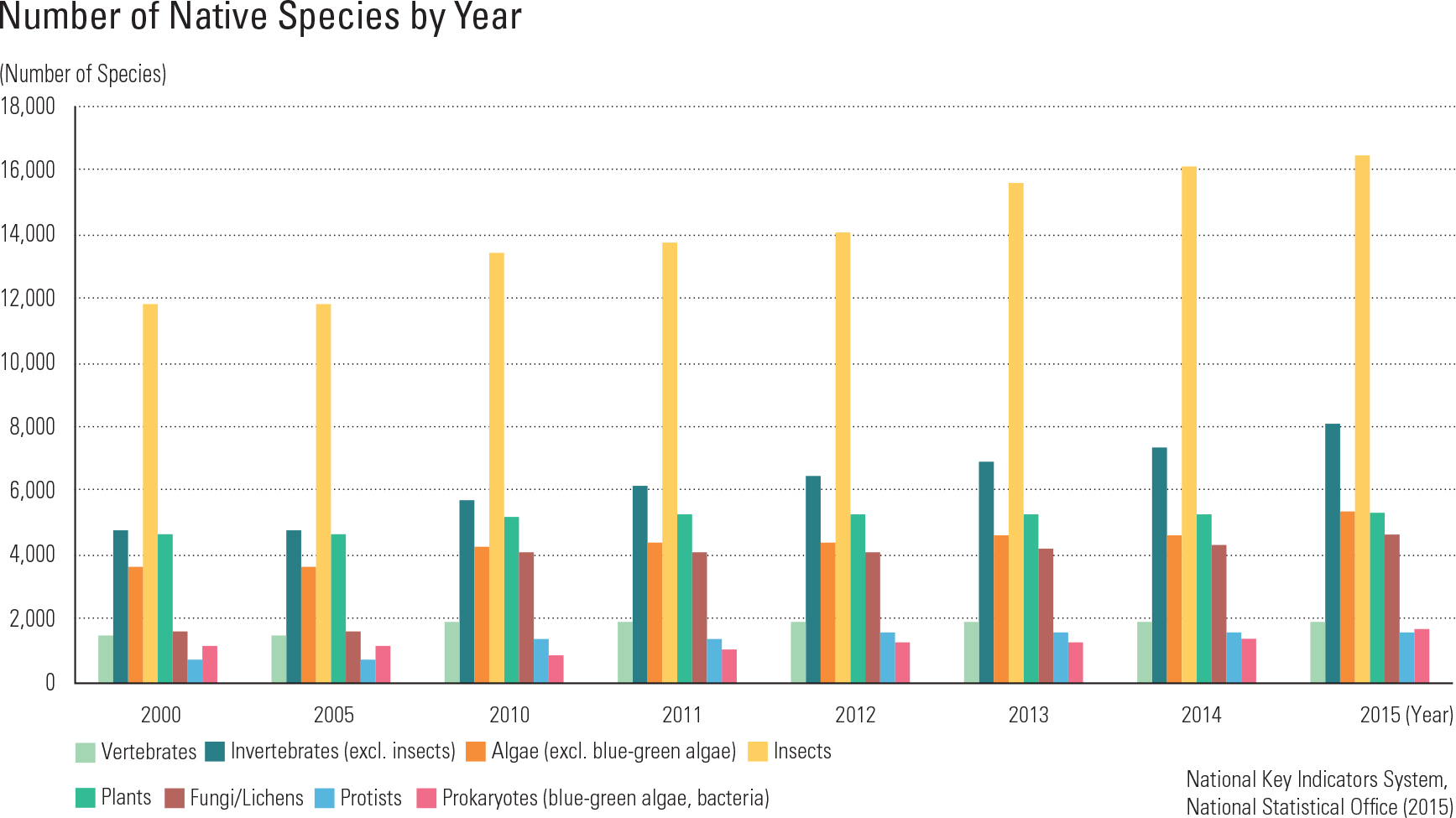English II
A total of 45,295 plant and animal species have been surveyed to wildly inhabit Korea. Among the native species, insects represent the largest proportion at 36.3% with 16,447 species, followed by invertebrates (8,167 species), birds (5,382 species), and plants (5,349 species). A sur- vey conducted in 2000 recorded a total of 28,462 species, which increased to 29,916 in 2005 after a comprehensive survey and data compilation process. The number of recorded species has been increasing after the full- edged biological survey. 33,253 species were recorded in 2008, 38,011 in 2011, 39,150 in 2012, and 45,295 in 2015. The number of native species to Korea is expected to increase as the survey continues. Plant species of Korea, a temperate region, dis- play vast species diversity and high endemism. 4,300 vascular plant species are known to exist in Korea, among which 280 are pteridophyta, 53 are gymnosperms, and 3,963 are angiosperms. Out of 3,963 angiosperms, 2,910 are dicotyledoneae and 1,053 are monocotyledoneae. Korean ora is characterized by rich diversity and a high ratio of endemic plants, including endemic vascular plant genera, such as Pentactina, Echinosophora, Abe- liophyllum, Hanabusaya, Mankyua, and Megaler- anthis. The rich oristic diversity and high endemism of Korea may be due to several factors. First, the Peninsula, which extends southward from North- east Asia to the Japanese Islands from 42 ̊ 2 ́ to 33 ̊ 4 ́ north in latitude, enables the accommoda- tion of diverse plant and animal species. A major mountain range that runs from the north to the south connects to other mountain chains. Second, the mountains and hills, which occupy nearly 65 percent of Korea’s territory and connect to each other, contribute to the diversity. The presence of about 4,000 islands provides a diverse geograph- ical environment that accommodates diverse ora. Third, Korea has climatic variability (from a mean annual temperature of 16 ̊C in Jejudo of South Korea to 5 ̊C in the Gaemagowon (Gae- ma Highland) of North Korea along with a wide range of temperature variations, i.e., a minimum winter temperature of -45 ̊C at Baekdusan, North Korea and a maximum summer temperature of 40 ̊C in Daegu, South Korea. Mean annual precip- itation also varies greatly, from 1,700 mm in Jeju- do and along the southern coastal region of South Korea to 950 mm in northern inland regions of North Korea. Distinct climatic zones from warm temperate to boreal also provide various condi- tions for diverse plants to grow. Fourth, there is relatively little volcanic and seismic activity, and no extensive glacial activity. These conditions, combined with other conditions, such as complex bedrock and soil systems, secured the survival of Tertiary flora. Finally, the Korean Peninsula, which has served as a migration route and ref- uge during both glacial and interglacial periods, has guaranteed the survival of both northern and southern oras.
page_2 |
